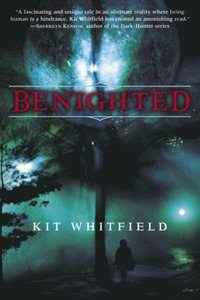
Lula Ann föddes mycket mörk, så mörk att hennes mor blev rädd för henne. Modern, Sweetness, var tillräckligt ljus för att inte behöva bli illa bemött i vardagslivet, men med dottern skulle det förmodligen gå sämre. Därför såg hon till att ge Lula Ann en mycket sträng uppfostran och mycket lite ömhet. Som vuxen kvinna tar Lula Ann avstånd från sin mor, tar sig det egna namnet, eller varumärket, Bride och är framgångsrik affärskvinna, mycket vacker och alltid klädd i vitt för att framhäva hudfärgen. En följd av att par illa genomtänkta val i samband med att mannen hon älskar lämnar henne gör att Bride råkar illa ut och hennes motgångar speglas även i någon slags kroppslig och själslig regression. Vad tar man med sig när man lämnar allt?
Gud hjälpe barnet är en koncentrerad roman om hur barndomens upplevelser påverkar hela livet. Toni Morrison berättar verkligen effektivt, kortfattat och tydligt. Ibland tar historien plötsliga språng framåt, och man får liksom arbeta sig ikapp den, lite grann som omvända klipphängare mitt i texten utan egentlig förvarning rycker fram i berättelsen. En annan intressant berättardetalj är hur perspektivet hela tiden ändras så att man man till slut förstår varför personerna i boken handlar som de gör, även om deras reaktioner kan verka märkliga till att börja med. Det känns dock emellanåt som om en del trådar i intrigen inte leder till något. Men slutligen ger boken en förvånansvärt mörk bild av hur viktigt ansvaret är som föräldrar har.




